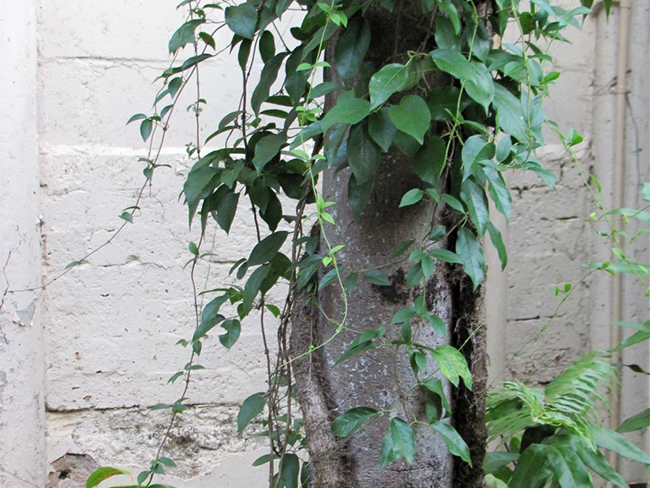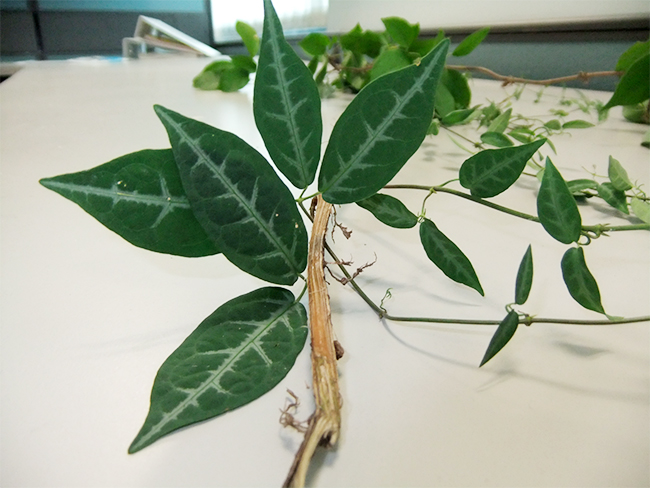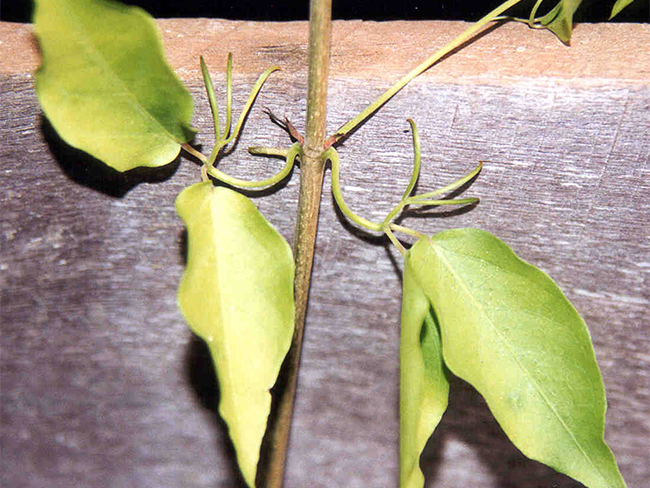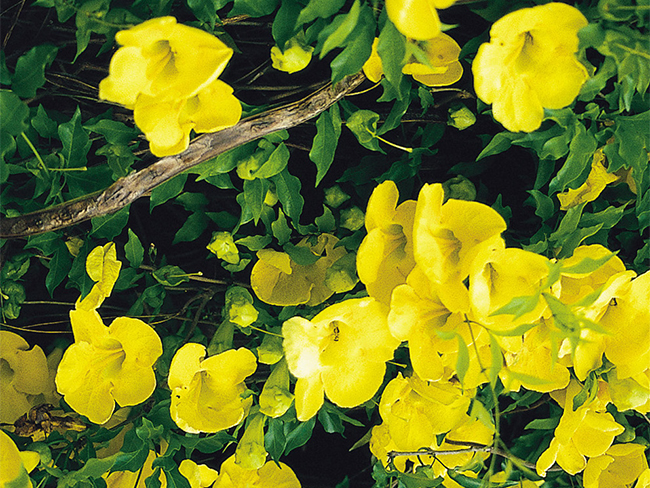Cat's claw creeper
Scientific name: Macfadyena unguis-cati or Dolichandra unguis-cati
Declaration status: Class A
Cat's claw creeper is a Weed of National Significance. For more information, go to the Australian Government's Department of Environment website.
Cat’s claw creeper was introduced to Australia from tropical America as an ornamental garden plant.
It has since escaped into the wild and become a major weed in native forests and riparian areas of eastern Australia.
It has had a serious impact along coastal and hinterland streams in Queensland and northern New South Wales.
Cat’s claw creeper is not known to be naturalised in the Northern Territory.
Impact
Cat’s claw creeper can have all of the following impacts:
- smothers native vegetation
- changes soil chemistry
- grows up over and can kill mature trees
- opens up the canopy for light-loving weeds.
Identification
You should use this as a guide. There may be other plants or weeds that look similar.
- 2 to 3m tall, branching shrub with hollow stems and branches
- change in colour from a pale green-red to grey when mature
- glossy leaves, maturing from dark red-brown to green, arranged alternately along branches
- distinctive unpleasant odour when crushed
- divided into seven to nine triangular toothed lobes with a central vein
- flowers are red-green colour that form as crowded, rigid spikes in the forks of upper branches
- egg-shaped fruit, about 2.5cm long
- covered in red or green soft spines, each lobe contains one seed
If you are unsure, contact the Weed Management Branch.
Control
If you think you may have seen cat’s claw creeper, or have this weed on your property, do not attempt to control it. Contact the Weed Management Branch immediately for assistance.
Give feedback about this page.
Share this page:
URL copied!




